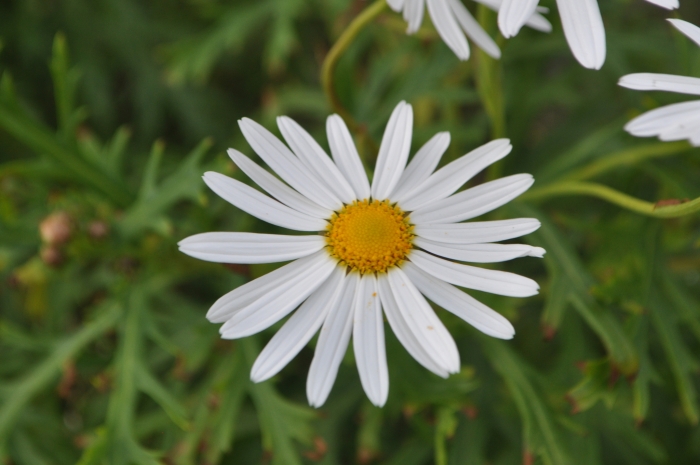Marguerite Daisy
(Argyranthemum frutescens)
Marguerite Daisy (Argyranthemum frutescens)
/
/

Tony Wills
CC BY-SA 4.0




















































Estimated Native Range
Summary
Marguerite Daisy is valued for its extended blooming season, typically from early spring to fall, providing a long-lasting display of flowers. It is well-suited for container planting, border edges, and as a ground cover in garden settings. This plant requires full sun exposure and well-drained soil enriched with organic matter. While it is drought-tolerant, it is sensitive to overwatering and poor drainage, which can lead to root rot. It can tolerate low temperatures but is not frost-hardy. In cultivation, it is often treated as an annual in regions with cold winters. Gardeners should be aware of its potential to become invasive outside its native range and take precautions to prevent unwanted spread.CC BY-SA 4.0
Plant Description
- Plant Type: Shrub
- Height: 2-3 feet
- Width: 2-3 feet
- Growth Rate: Moderate
- Flower Color: Pink, White, Yellow
- Flowering Season: Spring, Summer, Fall
- Leaf Retention: Evergreen
Growth Requirements
- Sun: Full Sun
- Water: Medium
- Drainage: Fast, Medium
Common Uses
Bee Garden, Bird Garden, Border Plant, Butterfly Garden, Drought Tolerant, Fragrant, Groundcover, Potted Plant, Salt Tolerant, Showy Flowers
Natural Habitat
Native to coastal areas and semi-arid regions of the Canary Islands
Other Names
Common Names: Paris Daisy , Marguerite Daisy , Paris Marguerite , Boston Daisy , White Marguerite , Strauchmargerite , Anthémis , Buskmargerit
Scientific Names: Argyranthemum frutescens , Chrysanthemum frutescens , Chrysanthemum carnosulum , Anthemis frutescens , Argyranthemum frutescens var. frutescens , Chrysanthemum foliosum , Chrysanthemum frutescens var. frutescens , Ismelia frutescens , Phymaspermum carnosulum , Pinardia frutescens
GBIF Accepted Name: Argyranthemum frutescens (L.) Sch.Bip.